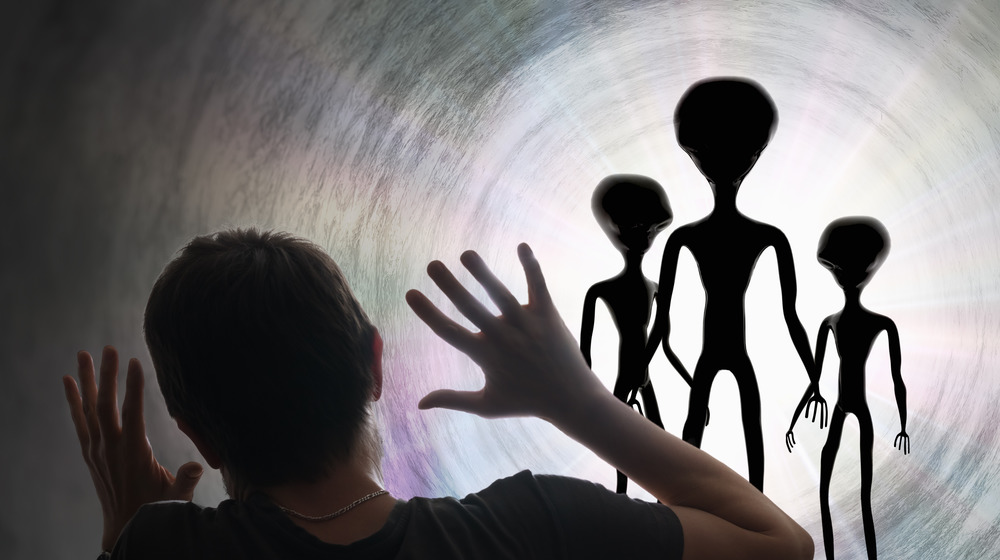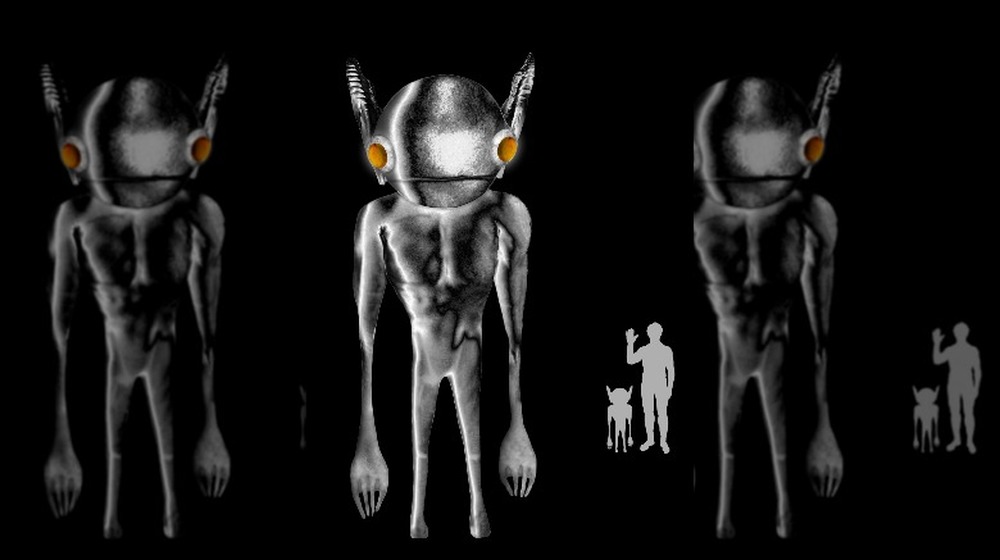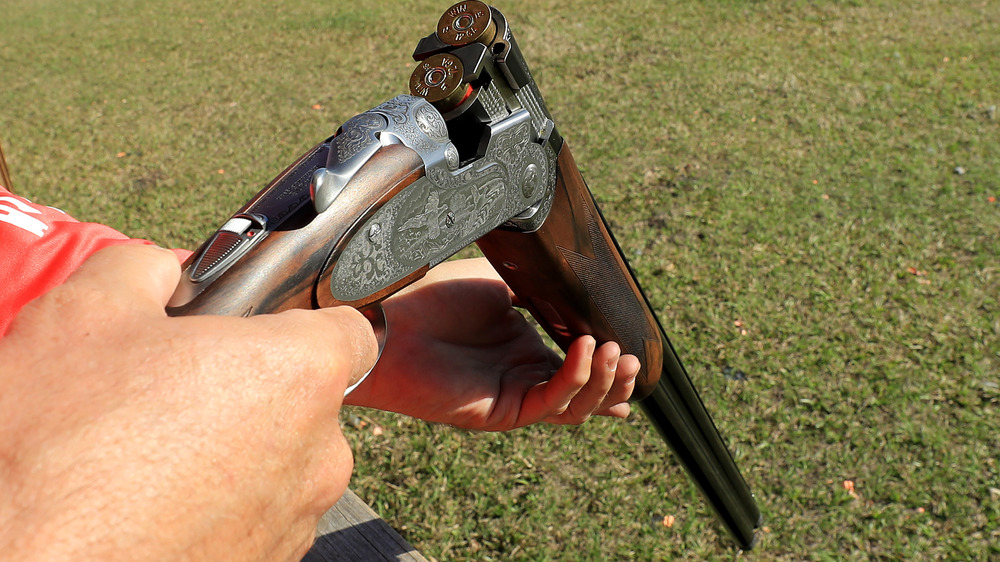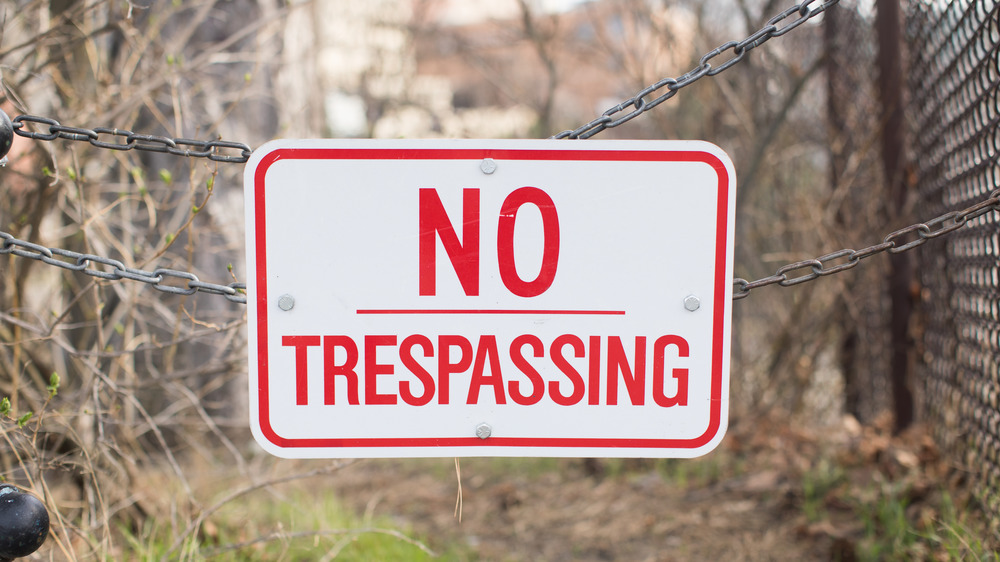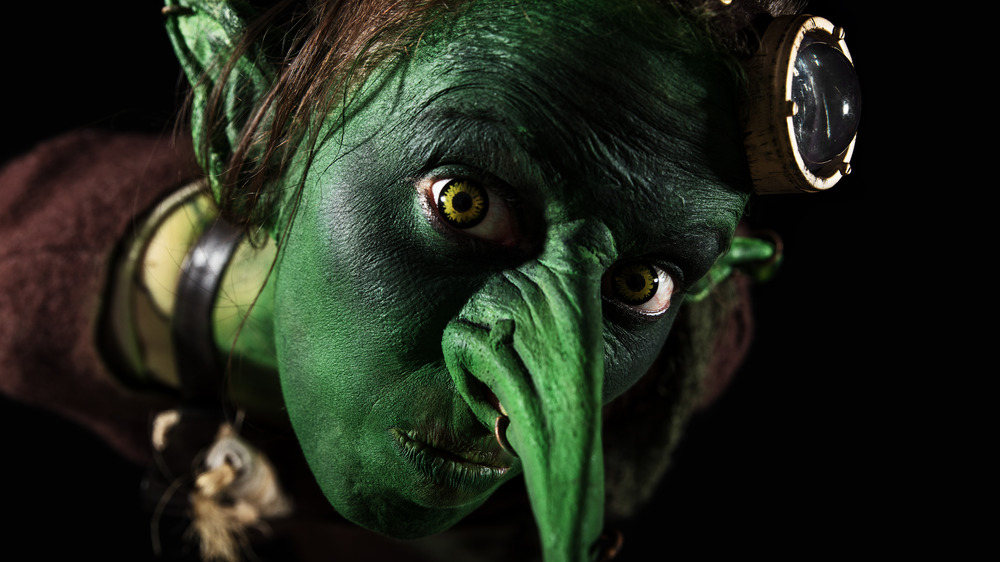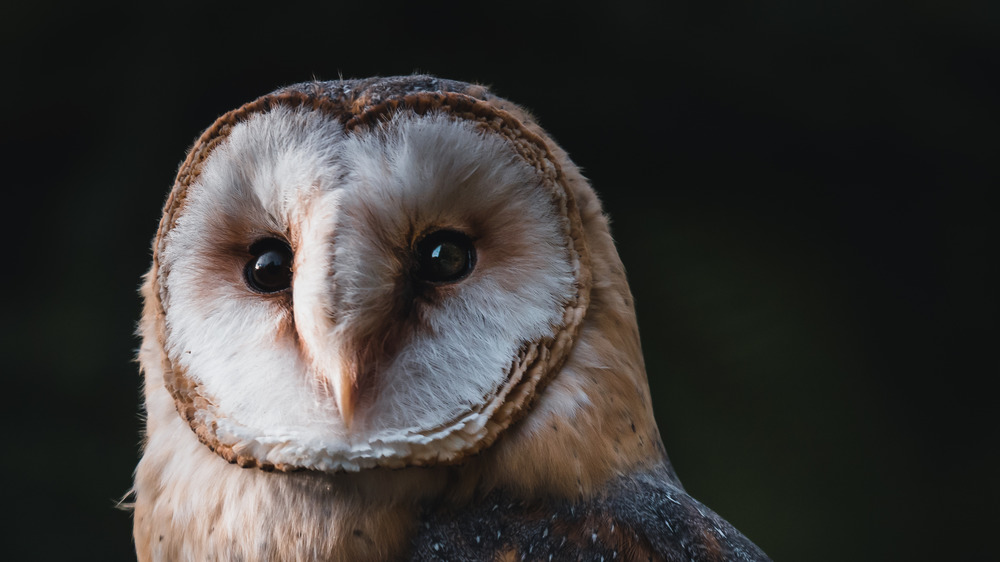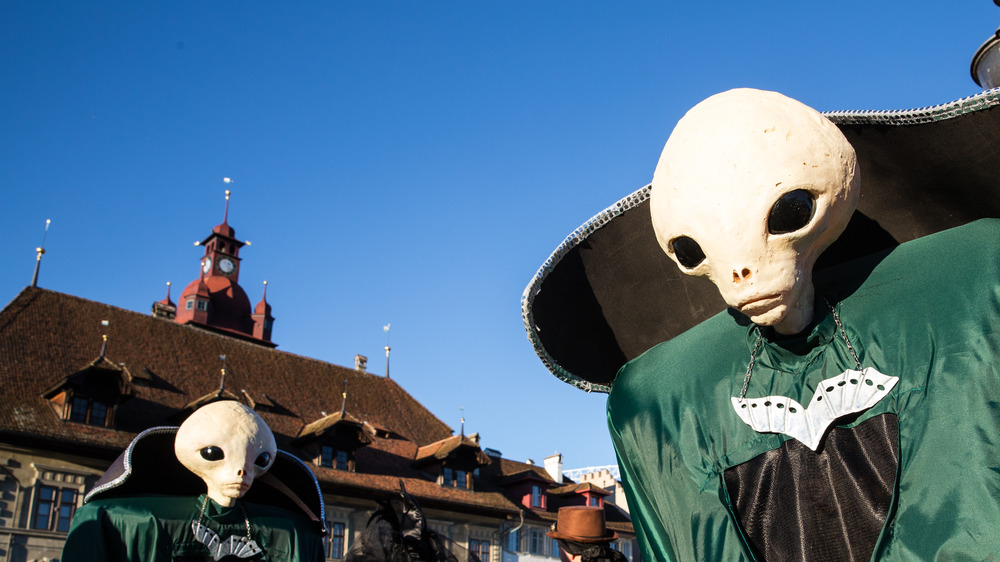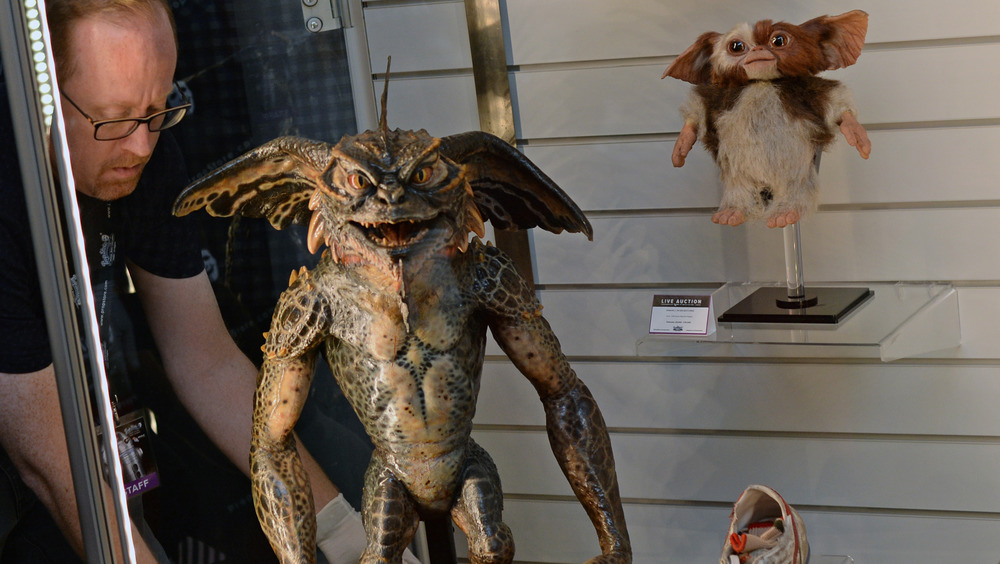The Bizarre 1955 Kentucky UFO Incident Explained
On Aug. 21, 1955, in the small town of Kelly, Kent., eight adults and three children were allegedly harassed by diminutive, impervious goblins who tried to invade their home — a farmhouse that History noted lacked amenities such as electricity, plumbing, books, and a telephone. Somehow, it was still fascinating to these men from beyond the stars.
Or it might have been that a few impoverished and uneducated men terrorized their families with nonsense and involved the police and military just for the fun of it, thereby inspiring a paranormal case whose weirdness resonates today. Without electricity, they apparently needed to make their own fun.
But neither feels entirely right. As Isabel Davis notes in Close Encounters at Kelly and Others of 1955, "they were not green, they were certainly not men, and they were seen [...] at Kelly, Kentucky." In short, inaccuracies abounded from the get-go, and nothing gets cleared up easily.
The little green men of Hopkinsville have landed
When Billy Ray Taylor was visiting the Sutton farm, he went to their well and witnessed something shoot out of the sky. The Clarksvillian quoted Taylor saying that it was "real bright, with an exhaust all the colors of the rainbow."
He ran back and told the Suttons. Country Living reports that they said to him that it was a meteor and to stop telling stories. When he asked his wife if she believed him, she burst out laughing.
Then the creatures came. Taylor and Elmer Sutton, called "Lucky" because he had the word tattooed across his knuckles, described them as three-and-a-half-feet tall with an "over-sized head, arms reaching the ground, hands with something similar to an eagle's talons and over-sized eyes glowing with yellowish light," according to Close Encounters. Matriarch Glennie Lankford expanded on this — "It looked like a five-gallon gasoline can with a head on top and small legs. It was a shimmering bright metal like on my refrigerator."
These creatures approached the house, arms raised, and floating. CBC Radio quoted Joann Smithey as saying that Lucky Sutton and Taylor "ran back inside and did the only thing that Kentucky folk know how to do to protect their family from the unknown — they grabbed shotguns." ("What else was he supposed to do?" Elmer Sutton, Jr., told the Kentucky New Era, "Go up and shake one of their hands?")
The invasion
According to Country Living, Sutton family matriarch Glennie Lankford asked Billy Ray Taylor what was this all about. He replied, "Miss Glennie, I hope you don't have to find out."
The Suttons and Taylors sheltered in the home as the creatures kept popping their heads into windows. They approached from the dark side of the house, getting to the roof and looking into second-floor windows. The adults sent the children to hide. Often, according to History, the creatures were within feet of the families. The creatures, when hit, would flip over backward with a metallic ping as though they were made of metal and would continue their approach. If shot in a branch, they floated to the ground.
The creatures never made it inside the home. It was unclear if this was even their intention, but they never seemed to act maliciously. Lankford wasn't sure that the creatures understood gunfire as a violent act, according to Country Living. Lucky Sutton and Taylor went out to try to find some of the creatures. One reached down from the porch, tapping Sutton on the head with its talon. This did not deescalate the situation.
As noted by Skeptoid, during a lull, Lankford pointed out — again — that the creatures did not seem to be doing anything more aggressive than being Peeping Toms and suggested that they get to the police immediately.
The police get involved
The families burst into the station, one shouting, "We need help. We've been fighting them for nearly four hours," according to the Kentucky New Era. Police chief Russell Greenwell later remarked, according to Close Encounters, "These aren't the kind of people who normally run to the police for help. ... what they do is reach for their guns."
In short order, 25 people had descended on the house. The Suttons and Taylors refused to reenter and left the police to gather evidence. One officer found a glowing substance on the grass, but none of it was collected. Officers also said there were "no tracks of 'little men,' nor was there any mark indicating anything had landed at the described spot behind the house." As Isabel Davis explained in Close Encounters, "there had been no rain for weeks, and the yellow-clay soil was baked hard" and "the 'little men' were reportedly almost weightless."
The Kentucky New Era reported that the only excitement came when one of the military police stepped on a cat's tail and "the cat let out a squawl and for a few seconds there was much activity and scurrying around..." After an hour of investigation, the police had not turned up a single alien. They decided to check again come morning.
Once all the police and their lights departed, the creatures returned. They kept peeking in windows, getting shot in the face for their troubles. The families did not get much sleep.
That morning
By morning, the Sutton men had to get to work in Evansville, Ind., taking their truck. Billy Ray Taylor was promised to a hunting trip. All were gone most of the day. Kentucky New Era carried the front-page headline, "Story of Space-Ship, 12 Little Men Probed Today."
The house was besieged again, not by little gray men (the term "little green men" comes from this case, accord to CBC Radio, but the family was misquoted) but curiosity-seekers, skeptics, and soldiers from nearby Fort Campbell. There had been no attempt to preserve the scene during and after the police visit. As Joann Smithey put it to Country Living, "There were so many reporters and looky-loos coming by and walking around the property, taking things and calling them 'souvenirs.'"
Before Lucky Sutton had left, he put out a "No Trespassing" sign, according to History. When this failed, he put out one charging admission, from $.50 to enter to $10 for taking pictures, spawning the headline in the Kentucky Messenger, "EARTHMEN PROFIT–See Where the 'Tubmen' Landed; Only 50C Per." Isabel Davis maintained in Close Encounters that the women did not collect a penny. (Skeptics bring the sign up as proof that this was about money. If this was the case, these professional carnies were the worst grifters. They took in no money and had to abandon their house, according to Country Living.)
Some consistencies
The case is unique in the canon of ufology. There were 11(ish) people who all claimed to see the same thing for a prolonged period, which quickly made it international news. Close Encounters at Kelly and Others of 1955 quotes Chief Russell Greenwell as saying, Glennie Lankford "was the most impressive witness. She's the type of person who wouldn't tell a lie if her life depended on it." (Lankford did allow some speculation to creep in that the creatures' slow movements with arms raised were intended to be communicative.)
Once separated, each witness gave nearly identical descriptions of the creatures. Bud Ledwith, engineer and announcer for the radio station WHOP, interviewed the families the day after the "landing," according to Close Encounters. He knew about police sketches and had both the skills and materials to attempt one with the women who were present. He was impressed by how precise they were. When the men returned, they agreed that the drawings were almost perfect.
The only one who deviated was Billy Ray Taylor, who said that they might have antennae or noses. Lucky Sutton gave him a look, which made Taylor back down. Taylor may not have been the rock on which they built their case, but the rest of them were solid.
Some inconsistencies
There are irregularities, however, though it is unclear if it is with the Suttons and Taylors or the distortions other people applied, intentionally or otherwise. In some reports, a dozen goblins were terrorizing the house. According to Skeptical Inquirer, Glennie Lankford stated she only saw two at one time, which was as good as saying there were only two at all.
The Suttons and Taylors claim to have emptied four boxes of shells. The police reported one bullet hole in the house and a few in a tree. There ought to have been an abundance of casings. Skeptoid claims that there were reports of spent ammunition everywhere and destroyed windows before stating that, in another account, neighbors heard only four shots. This latter claim was reinforced by Deputy Sheriff George Batts to the Kentucky New Era that morning. Close Encounters contested this, with Isabel Davis quoting an unnamed skeptic who claimed that a neighbor told him that "it sounded like a small war."
Billy Ray Taylor was the only one who seemed to embroider the truth to make it more exciting. Davis notes in her book that "[h]e was the only member of the group who appeared to arouse immediate doubt in everyone who talked to him." He thrilled at the attention this brought to him, which gave the skeptics more fodder for this being a hoax. As Davis notes, "His behavior was in sharp contrast to that of the other witnesses, none of whom aroused such prompt suspicion in the investigators."
Famous attention
This case attracted some big names in ufology. On the side of the skeptics was J. Allen Hynek. He was an astronomer who was a scientific advisor for the Air Forces' Project Sign and Project Blue Book, programs created to investigate UFO reports. In his learned opinion, according to Chris A. Rutkowski in A World of UFOs, the Hopkinsville-Kelly Goblin case "seemed 'preposterous' and offensive to 'common sense.'"
Isabel Davis, whose book Close Encounter at Kelly and Others of 1955 is the essential text of the case, was not so willing to discount when she visited in June 1956. Beyond "Well, something seems to have happened and the families are sincere," she makes the leap that this might have been aliens as — though this manifestation was singular in manner and form — it hits enough of the bullet points (pun sadly intended) of what an alien visitation ought to be — large-headed, thin limbed, big-eyed, diminutive humanoids who came from a ship.
Hynek did not interview the families, only examined the reports of the evidence, which was not convincing. He doesn't go as far as calling the families intentional hoaxers, but he does seem to consider this case beneath his attention. Davis, who did all she could to speak with the sometimes-taciturn families, was convinced that they were telling the truth.
Even Carl Sagan, skeptic and astrophysicist, showed some interest, according to The History Bandits, though he would have fallen closer to Hynek's camp.
Shaved silver circus monkey turf battle
One of the theories that skeptics dragged out is a tale wherein a caravan from the King Circus "stopped to exercise the camels and horses," according to Close Encounters. Several monkeys escaped and, instead of enjoying their freedom, decided to harass an armed backwoods family for many hours. This is not some local gossip but a 1957 statement by Major John E. Albert, included in Davis's book.
In some stories, the monkeys are shaved and painted silver. They may have rolled around in bioluminescent fungi. Did someone hear that the glowing fungus is called "chimpanzee fire" and start imagining?
Albert simultaneously claimed that this was all fabricated by Glennie Lankford after a frenzied revival meeting at the Holy Roller Church, inspired by a photograph she had seen of a silver-painted monkey. (It would have been from the April 1, 1950, edition of Neue Illustrierte newspaper, as shown on The Museum of Hoaxes — an April Fool's joke that the family would be unlikely to have seen). Lankford was "an impoverished widow woman ... with very little education," according to Albert, and therefore nothing she said could be trusted.
Another theory, which seemed to be conjured out of a skeptic's mind, is that the families were involved in a gun battle with neighbors. Who they were fighting and why did not concern the skeptic. He said, "They deserved to go to the penitentiary for it. It's a wonder no one got killed out there."
An explanation?
To Skeptoid, Joe Nickell hypothesized that the goblins must have been great horned owls. Owls are nocturnal, have broad, light faces that could reflect moonlight, and fly near silence. (He also speculates in the Skeptical Inquirer that 1952's Flatwood Monster and 1966's Mothman sightings were different owls.) The History Bandits noted that the families would have taken many nighttime trips to get water and would be too familiar enough with owls to confuse them with goblins. According to Moongiant, the moon was waxing crescent, giving only a little light to reflect. Also, owls are not known for flying toward gunfire, nor have they, to date, been shown to be bulletproof.
Others, just after the event and to this day, believe that the monsters "came in a container," according to former Kentucky state trooper R.N. Ferguson, quoted in the Skeptical Inquirer. Somehow, the entire family was full of hooch and hallucinating goblins all night. With this theory, after the police left (noting that there was no evidence of drinking on the property, no one present was drunk, and Glennie Lankford told Isabel Davis in Close Encounters, "liquor was not allowed in the farmhouse"), the families immediately got liquored up again. The Kentucky New Era reported the morning after the invasion that "all officials appeared to agree that there was no drinking involved."
Skeptoid does note that the Kappa Cygnid meteor shower was taking place around the time Billy Ray Taylor saw the object, but meteors are not traditionally big-eared floating monsters.
Little Green Men Festival
According to The Washington Post, in 2010, the town of Kelly decided they needed a way to attract tourists. Kelly Community Organization Vice President Joann Smithey told them, "It came down to the train tracks or the aliens." The latter won, undoubtedly upsetting fans of train tracks. Though the town holds the festival, Frank Brown, president of the Kelly Community Organization, told the Courier-Journal, "Fifty percent think something did happen and 50 percent just want to have fun."
During the total solar eclipse 2017, the festival hosted 20,000 people, a significant step up from the 1,500 who came to the first. Geraldine Stith, author of books about the goblins and daughter of Lucky Sutton, told the Courier-Journal (via The Washington Post), "You better check the hand you're holding [during the eclipse] to be sure it's the hand you want to hold, because you don't know what's going to be standing beside you when the darkness comes."
New City Stage premiered their play It Came from Kentucky, a musical puppet retelling of the goblin attack, during the festival. It did feature a few tweaks for narrative flow, such as that "Billie" Ray is now a woman kicked out of college for sassing a man. She, of course, has a crush on her cousin and befriends one of the aliens. That is until her cousin/crush's dad shoots one. That cleaves close enough to the facts to justify dubbing it the "true" story. The original Billy Ray Taylor couldn't have told it better.
Pop culture aftermath
The effects of the goblins have echoed to this day. If you enjoyed a movie in the 1980s that involved a creepy inhuman under 3-feet tall, there is a chance that someone blames the Kelly-Hopkinsville goblins for inspiring it. This is especially true if Steven Spielberg was at the helm. The Clarksvillian claims that this case was the foundation for both E.T. and Close Encounters of the Third Kind. Bruce G. Hallenbeck in Comedy-Horror Films: A Chronological History, 1914-2008 draws explicit connections between the goblins and gremlins in Gremlins. He further explains that the Crites in Critters were based on the Hopkinsville-Kelley goblins as well, but rewrites were rushed through to eliminate the similarities to Gremlins. Even with changing their shape into round and ravenous and reworking the story to involve galactic cowboys, both movies' bones are conspicuously similar.
More recently was an X-Files comic titled "Crop Duster," wherein goblins try to invade the house of a man who may be beating his wife, according to MyComicShop. Also, for fans of Pokémon, the Dark/Ghost-type Sableye is meant to represent the goblins, according to Gamesradar. Had the Suttons stocked Pokéballs, this case could have ended differently.
Not a small footprint for weightless creatures who seem to have existed only for one night in rural Kentucky and surely never returned.
Wait, the goblins are back?
"Some people are afraid the aliens are coming back," according to Joann Smithey, speaking to The Washington Post. Those fears might be justified.
According to Daily Grail, Hellier, a documentary series, begins when a doctor emails the Planet Weird team to tell them goblins have been harassing his family. The team at first takes this as a prank until a man calling himself Terry Wrist contacts them. He cryptically urges Dana and Greg Newkirk to travel to interview/pester locals, gather intel, and at no point haul a goblin before the cameras to apologize for spooking the Suttons and Taylors.
The series does not stay focused on the goblins long — there are only so many ways to say "there might be goblins, but we haven't seen them" — before descending into an all-encompassing conspiracy theory based around synchronicity, according to Higgypop. Eventually, they even rope the Mothman in (there is no mention if the Mothman is a pile of owls).
It is what the goblins would have wanted. If they could not invade the Sutton home, they can at least live rent-free in our nightmares and our streaming queue. Could it possibly have been real? In the words of Geraldine Hawkins, Lucky Sutton's granddaughter, to Kentucky New Era, "Man might want to know everything. I think there's some things out there that [God] doesn't want us to figure out and know what they are."
